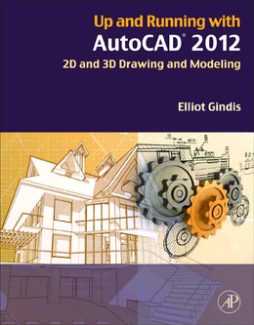
Additional Information
Book Details
Abstract
Gindis introduces AutoCAD with step by step instructions, stripping away complexities to begin working in AutoCAD immediately. All concepts are explained first in theory, and then shown in practice, helping the reader understand what it is they are doing and why, before they do it.
Divided into three parts, the book covers beginning through advanced AutoCAD, including 3D features.
Also included is an extensive Appendix
for each part, detailing additional useful CAD-related information not often found
in other text books
The book contains supporting graphics (screen shots) and a summary with a self-test section at the end of each chapter. Also included are drawing examples and exercises, and two running “projects that the student works on as he/she progresses through the chapters .
- Strips away complexities, both real and perceived and reduces AutoCAD to easy-to-understand basic concepts
- Teaches only what is essential to operating AutoCAD first, thereby immediately building student confidence
- All basic commands are documented step-by-step, meaning that what the student needs to type in and how AutoCAD responds is all spelled out in discrete and clear steps with screen shots added as needed
- Using the author’s extensive multi-industry knowledge of what is important and widely used in practice versus what is not, the material is presented by immediately immersing the student in practical, critically essential knowledge, with no padding of text or filler material
- All concepts are explained first in theory, and only then is AutoCAD introduced and the actual “button pushing discussed. This is one of the key concepts in having students understand exactly what it is they are doing and why, before they do it.
"This beginner's guide to two dimensional drawing with AutoCAD 2012 provides step-by-step instructions for performing common tasks with this industry leading drafting and design application. Beginning with an overview of the software environment and basic commands, the work covers layers and line types, text and dimensioning, blocks and groups, and basic printing and outputs. Chapters also cover additional topics such as options and shortcuts, design and file management tools, importing and exporting data, and external preferences. Chapters include illustrations and code examples as well as summaries, exercises, and study questions." --Reference and Research Book News, Inc.
